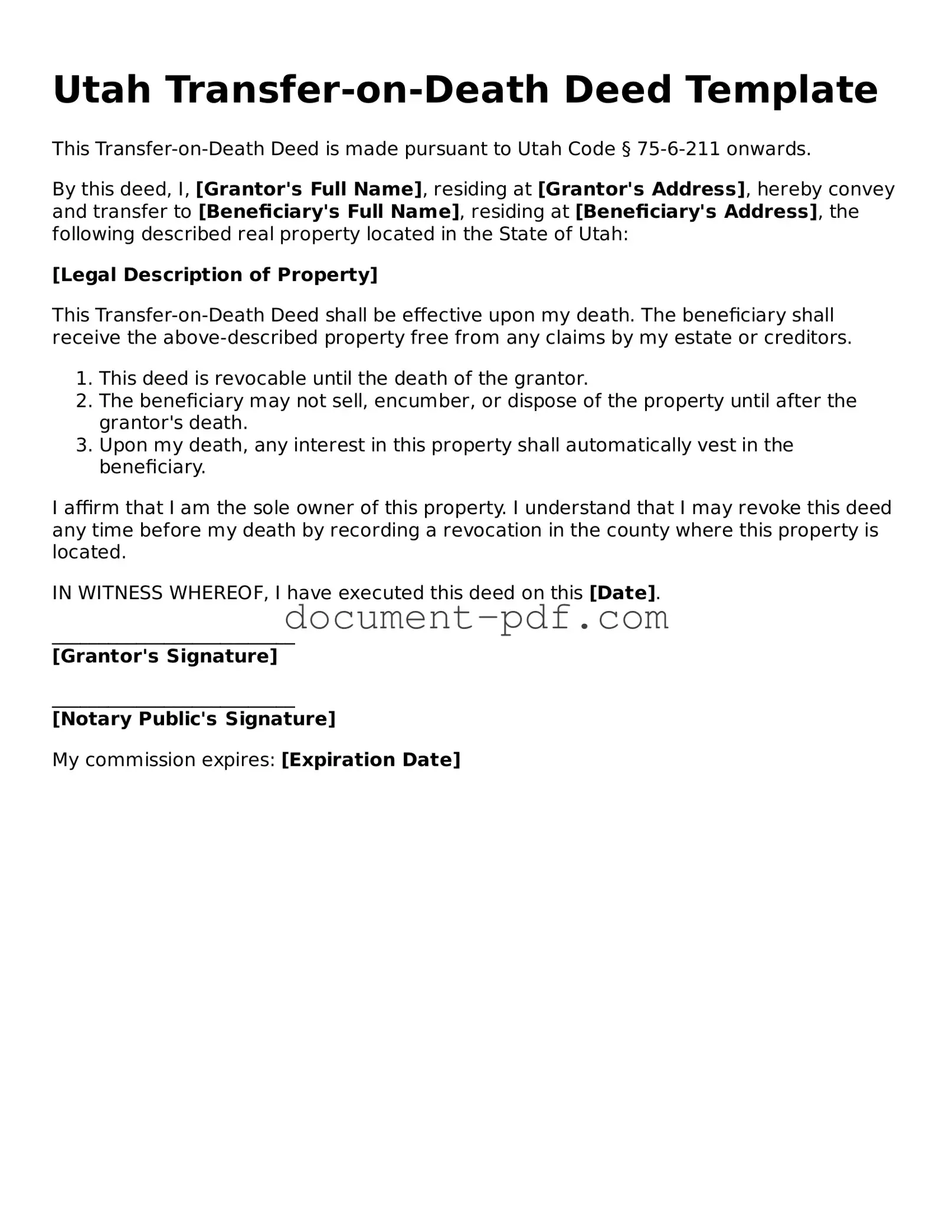Utah Transfer-on-Death Deed Template
This Transfer-on-Death Deed is made pursuant to Utah Code § 75-6-211 onwards.
By this deed, I, [Grantor's Full Name], residing at [Grantor's Address], hereby convey and transfer to [Beneficiary's Full Name], residing at [Beneficiary's Address], the following described real property located in the State of Utah:
[Legal Description of Property]
This Transfer-on-Death Deed shall be effective upon my death. The beneficiary shall receive the above-described property free from any claims by my estate or creditors.
- This deed is revocable until the death of the grantor.
- The beneficiary may not sell, encumber, or dispose of the property until after the grantor's death.
- Upon my death, any interest in this property shall automatically vest in the beneficiary.
I affirm that I am the sole owner of this property. I understand that I may revoke this deed any time before my death by recording a revocation in the county where this property is located.
IN WITNESS WHEREOF, I have executed this deed on this [Date].
__________________________
[Grantor's Signature]
__________________________
[Notary Public's Signature]
My commission expires: [Expiration Date]
